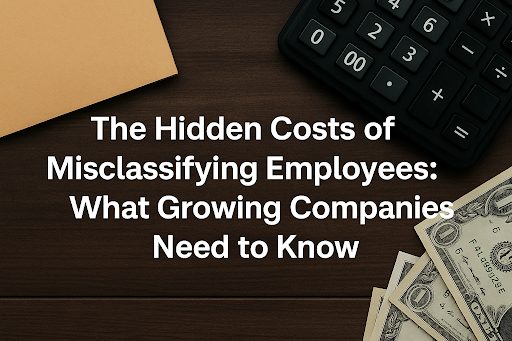Employee Misclassification Poses Critical Financial and Legal Risks for Growing Businesses

Summary
Full Article
Employee misclassification stands as one of the most substantial financial and legal risks confronting growing businesses in today's competitive landscape. This problematic practice, where companies incorrectly classify employees as independent contractors, frequently emerges during periods of rapid workforce expansion when administrative oversight struggles to maintain pace with operational demands. While some misclassifications result from genuine errors in navigating complex employment regulations, others originate from deliberate attempts to reduce labor expenses by circumventing employee benefits and legal protections.
The distinction between employees and independent contractors carries profound financial implications for organizations. Independent contractors, being legally self-employed, do not require companies to provide minimum wage guarantees, workers' compensation coverage, medical benefits, or overtime compensation. This cost-reduction approach, though appealing for small businesses operating with constrained resources, violates employment laws and triggers severe penalties from multiple governmental bodies. Companies discovered misclassifying workers face simultaneous financial penalties from the IRS, Department of Labor, and state labor departments, creating a triple-threat financial burden that can severely impact growing operations.
Legal complexity significantly amplifies the risk, particularly as companies must navigate varying state and federal regulations. California exemplifies this challenge with its ABC test, which presumes all workers are employees unless they meet three specific criteria demonstrating independent contractor status. Understanding federal guidelines alone proves inadequate when state-level variations introduce additional compliance requirements. This regulatory environment generates confusion for business owners who must reconcile different legal standards across jurisdictions where they conduct operations.
Beyond direct financial penalties, misclassification consequences extend to substantial legal fees, lost productivity, and administrative strain. The combined impact often exceeds initial cost savings many times over, transforming proper classification from merely a legal obligation into a sound financial strategy. Regular audits of employment classifications provide the primary defense against these risks, especially during workforce expansion phases when administrative processes may struggle to keep pace with hiring demands.
Effective safeguards commence with clear documentation and distinct onboarding processes for employees versus contractors. Centralized record-keeping that maintains separation between worker classifications creates essential paper trails demonstrating compliance. Training supervisors and managers to recognize differences between contractors and employees further reduces inadvertent misclassification, even when workers perform similar roles or operate within identical departments. These administrative controls, while requiring initial investment, ultimately protect businesses from far greater financial exposure. The post originally appeared on citybiz and emphasizes that proactive compliance measures represent the most effective approach to avoiding misclassification penalties. As businesses scale their operations, maintaining clear distinctions between employee and contractor relationships becomes increasingly critical to sustainable growth and legal protection.

This story is based on an article that was registered on the blockchain. The original source content used for this article is located at citybiz
Article Control ID: 270410